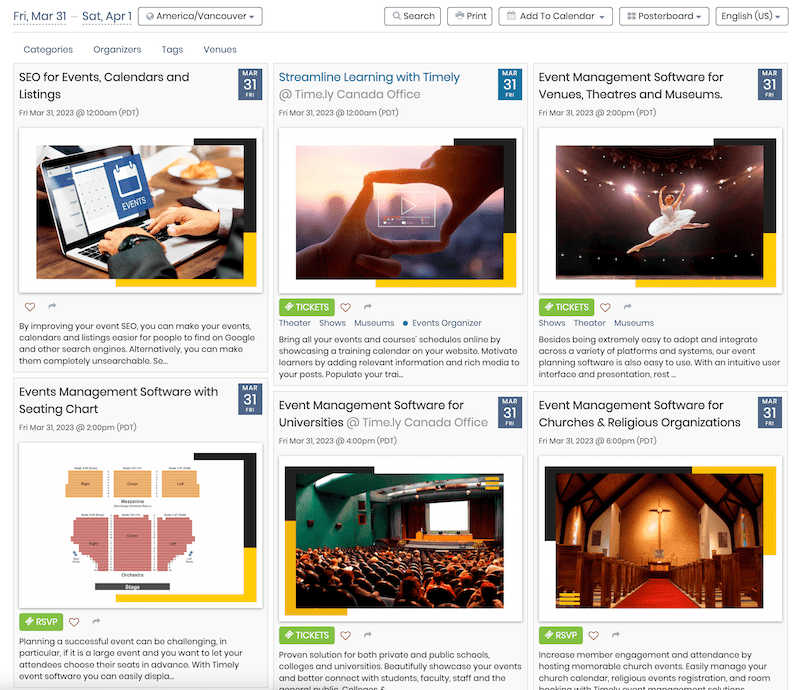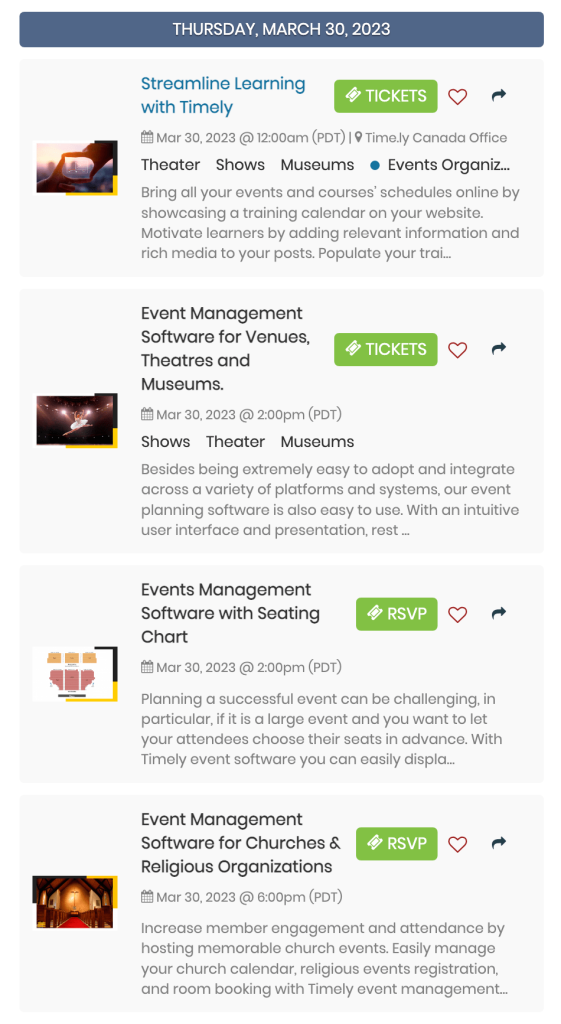With a Timely account, you can easily add an interactive calendar with events and widgets to your Drupal websites. In a few simple steps, you can embed the code snippet into the backend of your page. Changes or updates on the calendar or events show up on the website instantaneously. Additionally, you can use the online calendar to manage bookings, reservations, and ticket sales for your events – all with ease! In this post, you will learn how to add an events calendar and widgets to a Drupal website.
1. What is Drupal?
Drupal is a free and open-source content management software (CMS), just like WordPress. However, the main difference between them is that Drupal is more focused on developers features, while WordPress is more user-friendly.
Indeed, Drupal provides a comprehensive platform for managing digital content across websites and applications. It offers a range of advanced features, such as multilingual and SEO capabilities, security protocols, and custom content types. As a result, Drupal has quickly become a favorite among the tech community.
If you are planning to create a calendar for your Drupal site, this post will show you how to add Timely events calendar to a Drupal web page. We invite you to keep reading and explore this in more detail.
2. Full Calendar vs Widgets Embedding
Timely event calendaring system can provide a great way to organize, promote and monetize events on Drupal. You can choose among a wide variety of calendar views, and customize the website experience by creating a full-scale calendar or a mini calendar widget.
A full-scale calendar usually takes up the entire Drupal page, and has a range of calendar functions. For example, date and keyword search, calendar subscription, and filters.

In comparison, the mini calendar widget views are smaller and require less space on the page. Moreover, they have fewer functions, such as limited display of upcoming events, with no search or filtering features.


In addition, you can also use Timely slider and carousel widgets to enhance the look of your Drupal site. These widgets definitely provide visitors with a beautiful and engaging way to explore your events.
All options can be embedded individually or together to give your website visitors an uninterrupted browsing experience.
3. How to Add Full Calendar Views to a Drupal Page
Once you have obtained your installation code, you are ready to embed your Timely events calendar into your Drupal page. Refer to the post How to Set Up the Embed Code for your Timely Calendar if you need assistance in obtaining your code.
Follow the provided instructions to seamlessly embed your calendar into your Drupal website:
- Log in to your Drupal account.
- On the top menu, click on Content.
- Next, click on the page where you want to install your Timely calendar.
- When you open the Edit Basic page, click the Source option, and select the Full HTML text format after which you can paste the previously created and copied Timely embed code. Then, save the changes.
- Next, go to the front end of your Drupal site. There you will see that your Timely calendar has been properly installed, according to your embed code settings. If you still don’t see the calendar, try logging out of Drupal.
4. How to Add Widgets to a Drupal Website
In order to make a page on Drupal with a mini calendar views, sliders and carousels widgets, you must first generate the embed codes. Check out the user guide posts below for guidance on creating the embed codes for each of these features:
- How to Set Up the Embed Code for Calendar Widget Views
- How to Set Up the Embed Code for Event Sliders
- How to Set Up the Embed Code for Event Carousel
With the embed codes ready, follow the same instructions above to add the codes to the desired Drupal web page. The only difference is that you will have to adjust the dimensions of the embeddable area of the creating the page before embedding the codes. In doing so, you will ensure the widget appears in the correct place on the page.

We hope that this user guide has helped you learn how to add an events calendar to Drupal websites and pages. If you wish, you can even use Timely calendar to accept bookings and registrations, as well as sell tickets to your events, directly from your own website.
For more user information, please go to our Help Center. If you have any questions, feel free to contact us. Alternatively, you can open a support ticket from your Timely account.